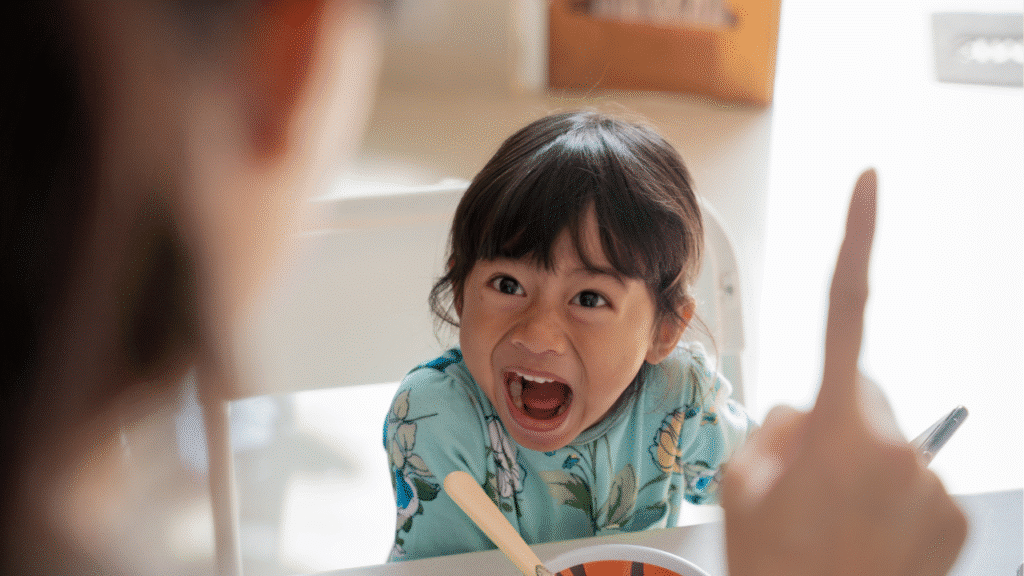Anger in children is often misunderstood as stubbornness or misbehavior. But beneath the raised voices and flailing arms is a heart struggling to handle overwhelming emotions. Children don’t throw tantrums just to “act out”—they do it because they lack the tools to regulate what they feel.
If you’re a parent, teacher, or caregiver, knowing the best tips to calm down an angry child can help transform conflict into connection. In this blog, we dive deep into the causes of childhood anger, the impact of screen exposure, and powerful, practical strategies that truly work.
Why Do Children Get Angry?
Children experience anger for a variety of reasons, including:
- Unmet Needs: Hunger, tiredness, or overstimulation can instantly trigger emotional outbursts.
- Frustration: When they can’t express themselves, solve a problem, or feel misunderstood.
- Boundary Testing: Anger is a way to assert autonomy, especially during developmental leaps.
- Stress or Anxiety: Family tensions, school stress, or overstimulating environments can lead to emotional overload.
- Overexposure to Screens: Excessive screen time can reduce a child’s ability to self-regulate. Fast-paced content overstimulates the nervous system, making them more irritable, impatient, and reactive.
Check Out: Break the Overthinking Loop: Powerful Ways to Escape Mental Chaos and Regain Clarity
How Phones and Screens Fuel Anger in Children
In the digital age, screens are everywhere—and they’re not neutral. While technology has its benefits, constant exposure to phones, tablets, and fast-scrolling apps can desensitize a child’s brain, impair attention span, and increase emotional dysregulation.
- Instant Gratification: Apps and games reward quick wins. When real life doesn’t work the same way, children may feel frustrated and angry.
- Dopamine Overload: Repeated screen use floods the brain with dopamine, the “feel good” chemical. Withdrawal from this can cause irritability.
- Reduced Sleep Quality: Blue light exposure interferes with melatonin, disrupting sleep—a key factor in emotional health.
Limit screen time, especially before bedtime, and replace it with sensory or creative play. This single shift can reduce outbursts significantly.
Check Out: Green Coffee Recipe for Weight Loss: The Ultimate Natural Brew That Melts Fat Fast!
Best Tips to Calm Down an Angry Child
Now that we understand the why, let’s explore the how. These mindful techniques have been tested by therapists, educators, and emotionally intelligent parents—and they work wonders.
1. Name the Emotion Gently
Instead of saying “Stop crying” or “Calm down,” try soft empathy:
“You seem really upset right now. Is it because something felt unfair?”
Why it works: Naming the emotion helps the child feel understood, not shamed. It also activates their prefrontal cortex, which aids self-regulation.
2. Offer a “Calm Corner,” Not a Timeout
Design a cozy spot with soft cushions, fidget toys, or books. Invite your child to go there when emotions feel big—not as punishment, but as a safe retreat.
Why it works: Children need co-regulation, not isolation. Calm corners build emotional safety and reduce stress hormones.
3. Use Mirror Talk and Reflective Language
If your child yells or clenches fists, gently mirror back what you see:
“I see your hands are tight—feels like something’s really bothering you.”
Why it works: It shows you’re tuned in. Reflective talk builds trust and brings awareness to their body and emotions.
Check Out: Listen to Music Every Day While Working: Hidden Dangers Behind This Popular Productivity Hack
4. Draw the Feeling Out
Ask your child to draw how their anger looks or feels. Maybe it’s a volcano, a thunderstorm, or a wild lion.
Why it works: Drawing helps externalize the emotion, turning it into something manageable. It’s especially helpful for non-verbal or younger children.
5. Regulate Your Own Nervous System First
Children mirror adult energy. If you’re triggered or yelling, it escalates the situation. Take a deep breath, soften your tone, and pause.
Why it works: Your calm signals safety. When your nervous system is regulated, your child’s brain feels it’s okay to de-escalate too.
6. Teach Breathing or Grounding Techniques
Use fun methods like “blowing bubbles,” “smell the flower, blow out the candle,” or grounding through sensory touch (holding a soft toy, squeezing a stress ball).
Why it works: These techniques help shift the nervous system from fight-or-flight to calm-and-connected.
7. Reduce Screen Time and Increase Connection
Swap phones for physical play, storytelling, music, or nature walks. Keep screens out of bedrooms and avoid overstimulating content.
Why it works: Reducing digital input helps restore emotional balance, attention span, and sleep—vital ingredients for better mood regulation.
Connection Over Control
Anger isn’t a problem—it’s a messenger. When children feel safe, seen, and supported, they’re more likely to express big emotions in healthy ways.
By practicing these best tips to calm down an angry child, you’re not just stopping a meltdown. You’re building emotional intelligence, resilience, and trust—qualities that last a lifetime.
